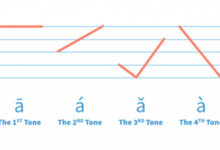
Benefits for Outsource Blog Writing for Businesses of All Natures & Sizes
There is no denying in mentioning that outsourcing is quite common in today’s world, and every other business from small to large-sized is found to outsource its works. Outsourcing is equipped with numerous advantages and that is the main reason for its popularity in business circles and among other entities. Business functions such as accounting, human resources, and payroll are outsourced, but outsource blog writing is surely challenging. This is because that a blog is the voice of a business, and of course a critical part of a business’s content marketing strategy.
Should Blog Writing Be Outsourced?
In a capsule, the answer to this question is ‘yes’ provided that outsource blog writing should be approached in the right manner. If blog writing is outsourced, it comes up with several benefits such as:
Time-Saving: If a blog post is written, much time is consumed on this task – probably one to three hours are spent. Thus, if outsourced, the time consumption is saved.
Budget Reduction: Mammoth amount of money is saved. Hiring a full-time writer for your company or business lands you on a monthly salary. Therefore, if you outsource the work, you will end up saving many bucks.
Technology and Infrastructure Cost Saving: It is obvious when a blog post or writing work is outsourced, it saves technology and infrastructure since the company or the writer hired by your business will use its or his/her own resources.
Profits: Outsource blog writing will certainly endow you with business profits if an authentic, experienced and skilled source is used.
Questions about Outsourcing Blog Writing for a Business
There is an endless amount of outsourcing blog writing services available matching up your business needs, requirements and budget. Before you ink an agreement with any of them, just focus on some pivotal points or the questions, as your business depends largely on the content is produced for your business promotion, profit and growth. The content produced is the front face of your company or the business.
Can a Blog Writer Match Our Business Style and Tone?
Well, a business has its own style and tone that an outsourced writer hardly can capture (no matter he or she is quite skilled and experienced). But the solution is certainly out there. Let’s find it out now:
Spend Time to Educate the Outsourced Writer: It surely looks painful at the first time but ends up bringing dividends for your business. Have a meeting with the writer and explain your business and content goals.
Can a Quality Content Be Taken on a Lower Cost?
‘No’. If you like to get higher quality content (that has to be taken from outsourcing blog writing if you like to achieve your goals), you need to pay a good cost and hire a brilliant-skilled writer who can understand your business and present your business in a manner you like to.
What to Do When Outsourcing the Writing?
Don’t go for cheap options – as the writers with lower prices are less qualified and experienced.
Have a look at past work – this will showcase the writer’s skills and talents.
Hire a single writer or an outsource blog writing company–with a contract with a service provider, your business may have multiple options for quality writers.








